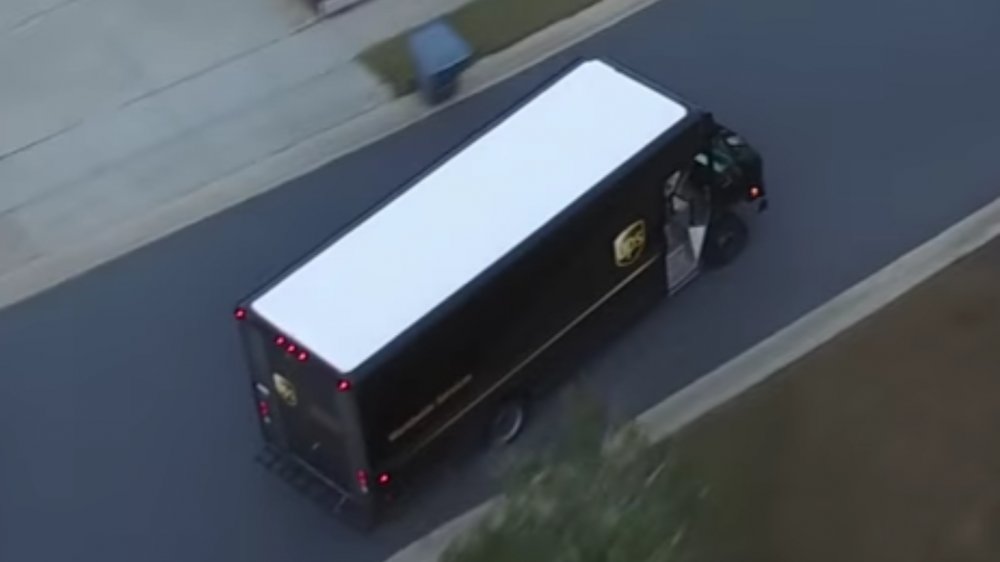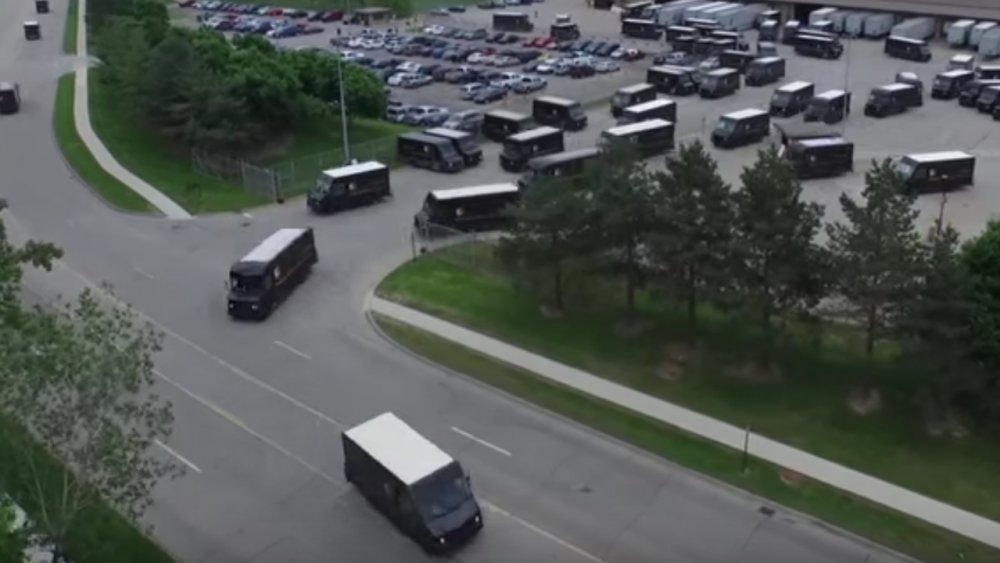The Real Reason UPS Trucks Have White Roofs
Human creativity knows no boundaries. But when it comes to transporting people or parcels, that creativity runs into a stop sign where vehicle color is concerned. Despite all the vibrant colors in the rainbow, airplanes are usually a plain white, school buses are the color of mildly dehydrated pee, and UPS trucks are a dark, almost chocolate-syrupy hue, except for the roofs, which are technically translucent but look solid white. All of these colors serve a logical purpose. Painting planes white saves money and combats overheating. Yellow buses are eye-catching, making them safer for picking up children. And the famous brown fleet of the United Parcel Service? Hold on to your packages; we're about to deliver that information to your brain.
What translucent did for brown
If history had gone a little differently, UPS would have asked people, "What can yellow do for you?" according to CNN. Originally founded as the American Messenger company by a pair of teenagers from Seattle, the company wasn't wedded to the color brown at the beginning. In fact, the proto-UPS didn't even have trucks, instead relying on bicycles and bipedal travel for deliveries. Eventually, the company evolved into Merchants Parcel Delivery and added cars and motorcycles to its transport repertoire.
When deciding on a color for the vehicles, co-founder James Casey was partial to yellow. However, his parcel partner Charlie Soderstrom balked, arguing that "yellow vehicles would be impossible to keep clean." Soderstrom suggested following the example of Pullman railroad cars, which were brown to camouflage the built-up filth.
As UPS, the company would develop increasingly sophisticated ways to cut costs. In 2010, Forbes reported that UPS spent $1 billion a year on technology that closely monitors how efficiently the trucks run and how efficiently drivers work. Another way the company cuts costs is using translucent roofs for the trucks.
Concordia University professor Hashem Akbari explained to NPR that translucent roofs reduce the "need for cooling the interior" of the trucks and eliminates the need for drivers to use flashlights to locate packages on the truck during the day. The company might want to rethink cooling those trucks, though. NBC reports that the cargo area of the vehicle can "easily" exceed 120 degrees, and some drivers have recorded numbers as high as 152 degrees.

